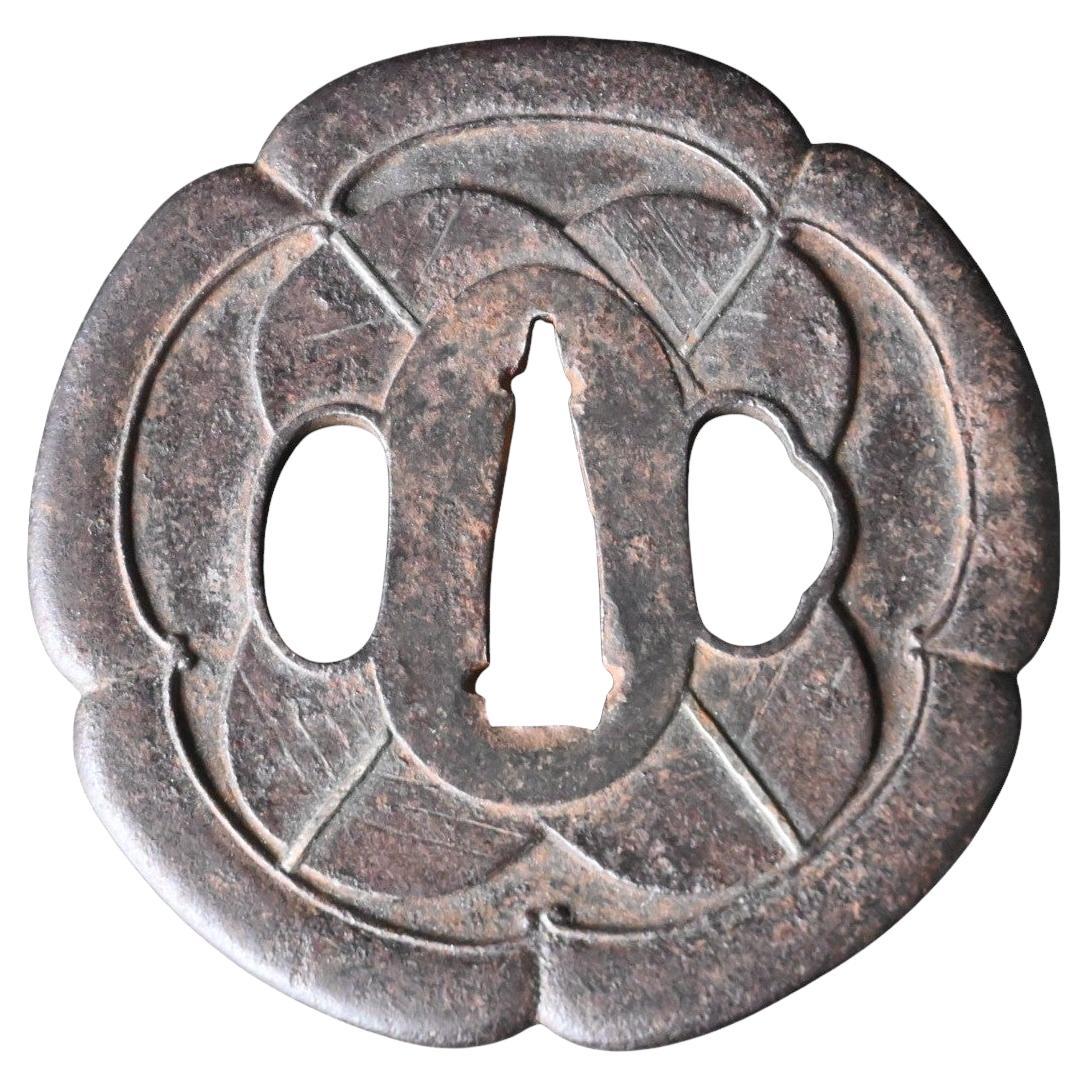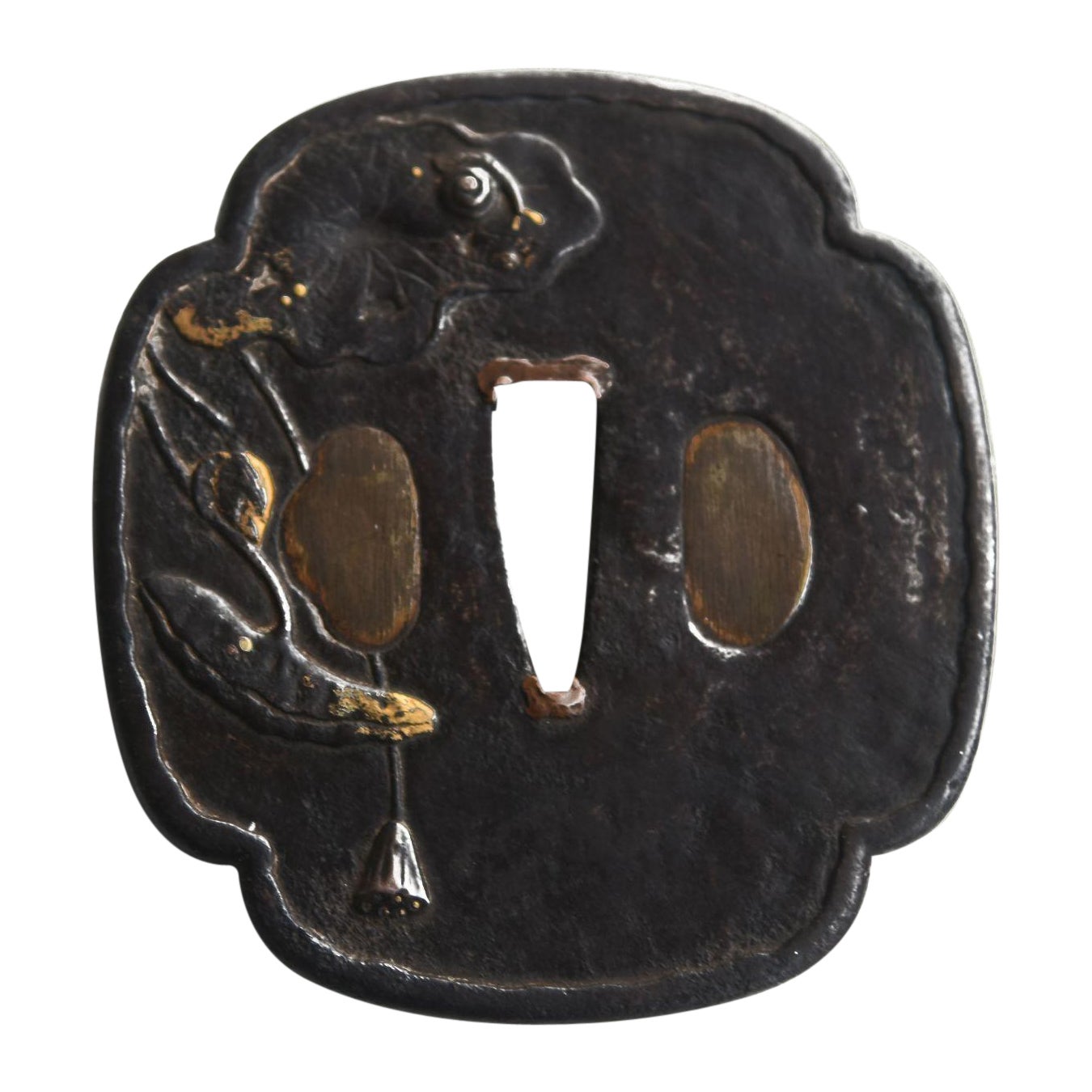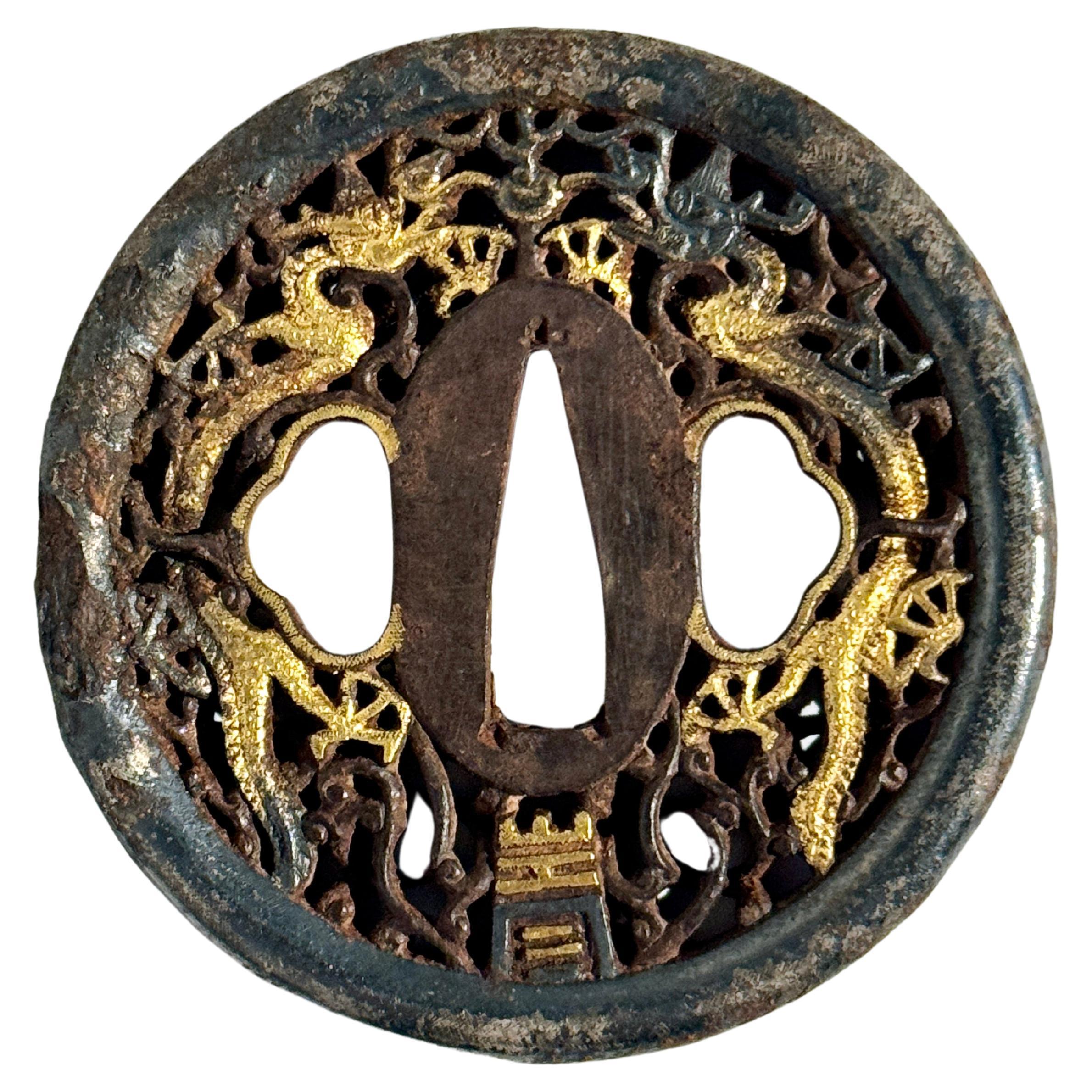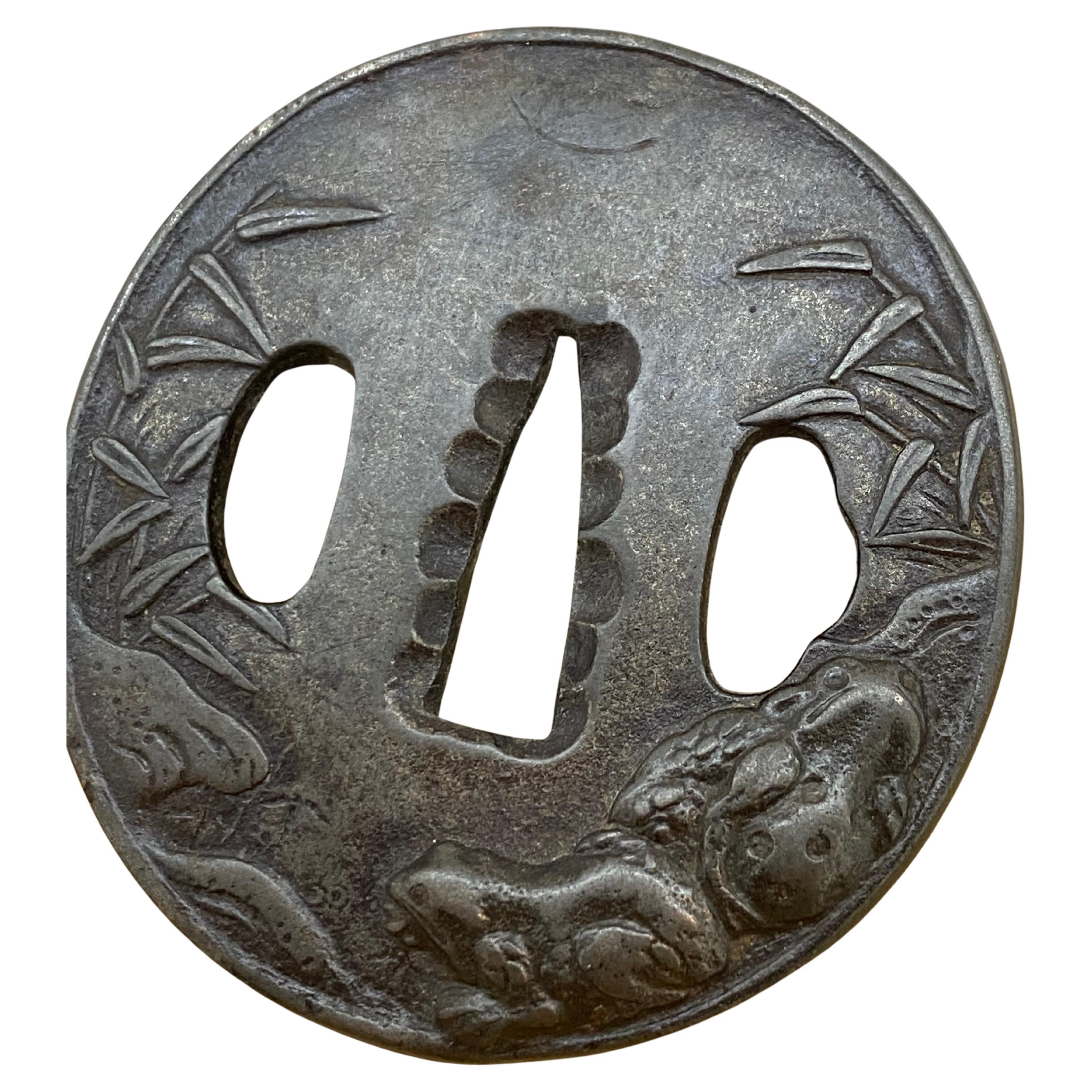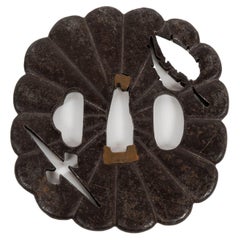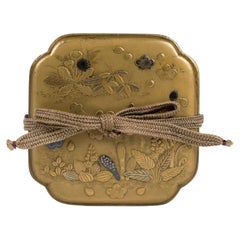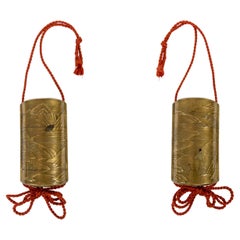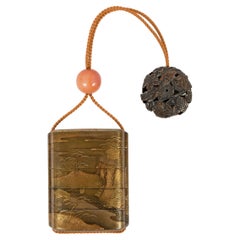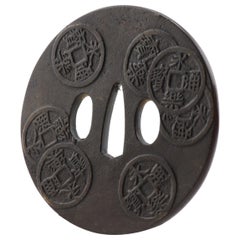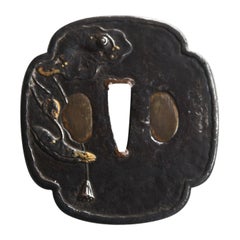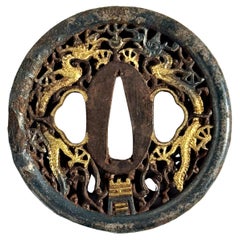Items Similar to Japan medallions tsuba Tanaka school Edo period
Want more images or videos?
Request additional images or videos from the seller
1 of 5
Japan medallions tsuba Tanaka school Edo period
$1,768.96
£1,324.11
€1,500
CA$2,434.60
A$2,713.61
CHF 1,423.74
MX$33,137.61
NOK 18,027.62
SEK 17,038.85
DKK 11,419.06
About the Item
Ovoid-shaped (nagamarugata) iron tsuba hammered and chased with medallions. On one side, medallions of a dragon with gold highlights and a komainu (or shishi – lion dog guarding the temple). On the other one, a medallion of waves and clouds with gold highlights
Tanaka school
Japan – Edo period (1603-1868)
Width: 3.1 in. (8 cm) – depth: 3.3 in. (8.5 cm)
- Dimensions:Height: 0.2 in (5 mm)Width: 3.15 in (8 cm)Depth: 3.35 in (8.5 cm)
- Materials and Techniques:
- Place of Origin:
- Period:
- Date of Manufacture:circa 1750
- Condition:
- Seller Location:PARIS, FR
- Reference Number:Seller: D-2023-11071stDibs: LU8311235340232
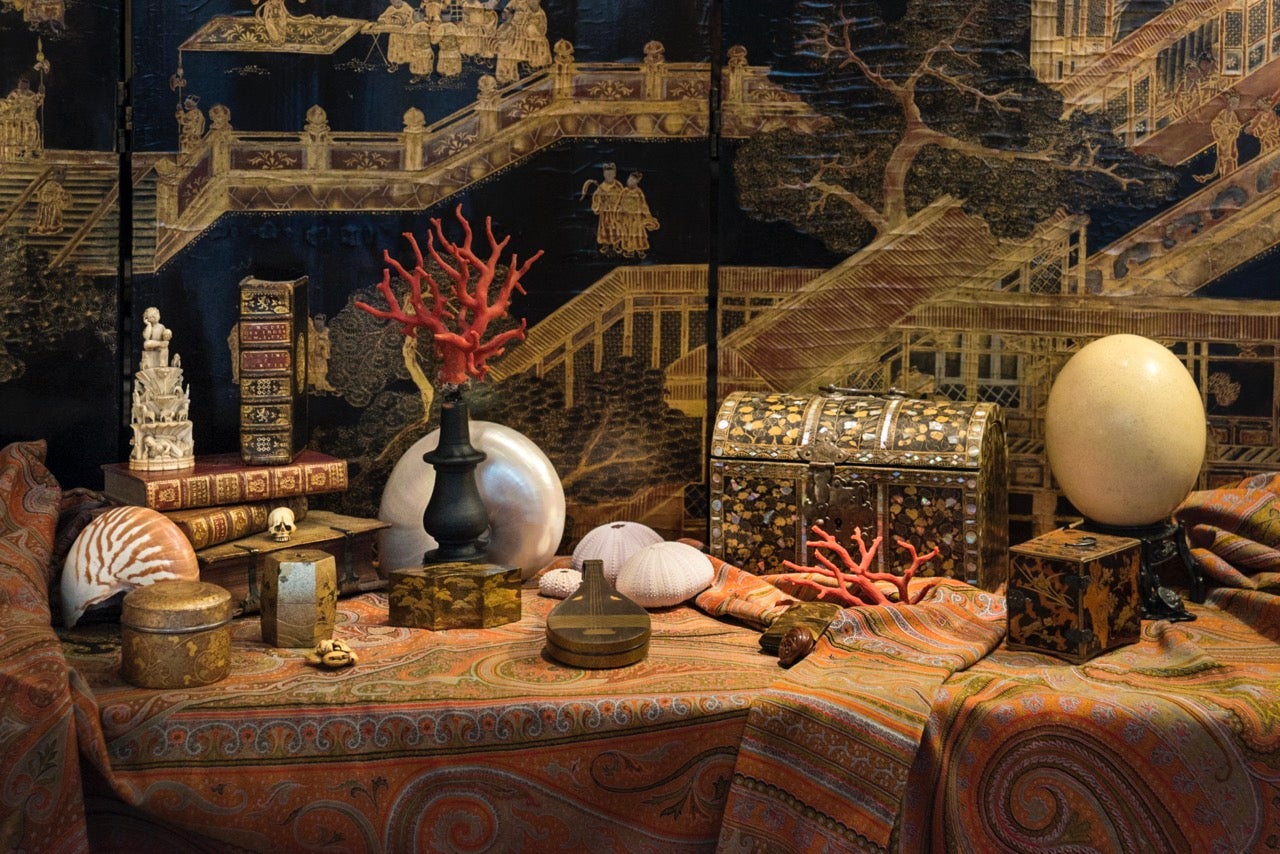
About the Seller
No Reviews Yet
Vetted Professional Seller
Every seller passes strict standards for authenticity and reliability
Established in 2013
1stDibs seller since 2023
Typical response time: Several days
- ShippingRetrieving quote...Shipping from: PARIS, France
- Return Policy
Authenticity Guarantee
In the unlikely event there’s an issue with an item’s authenticity, contact us within 1 year for a full refund. DetailsMoney-Back Guarantee
If your item is not as described, is damaged in transit, or does not arrive, contact us within 7 days for a full refund. Details24-Hour Cancellation
You have a 24-hour grace period in which to reconsider your purchase, with no questions asked.Vetted Professional Sellers
Our world-class sellers must adhere to strict standards for service and quality, maintaining the integrity of our listings.Price-Match Guarantee
If you find that a seller listed the same item for a lower price elsewhere, we’ll match it.Trusted Global Delivery
Our best-in-class carrier network provides specialized shipping options worldwide, including custom delivery.More From This Seller
View AllJapan chrysanthemum tsuba
Located in PARIS, FR
Iron tsuba in the shape of a chrysanthemum (kikugata), openworked in negative with foliage and geometric patterns. Chrysanthemum shaped tsuba were quite popular in the Edo period as...
Category
Antique Mid-18th Century Japanese Metalwork
Materials
Gold, Iron
Japanese golden kobako flowers Edo period 18th century
Located in PARIS, FR
Quadrangular kobako box decorated with flowers in gold and blue lacquer with aogai inlay. Lid and sides in fundame lacquer, underside and interio...
Category
Antique 18th Century Japanese Japonisme Lacquer
Materials
Gold
Japanese Sagemono Inro box with a maki-e decor of a Samuari in a lake landscape
Located in PARIS, FR
Inrô in gilded lacquer according to the takamaki-e, hiramaki-e and kirigane techniques, with five squares of a mountain lake landscape.
On the first side, there is a man on horsebac...
Category
Antique 18th Century Japanese Edo Lacquer
Materials
Gold
Japanese inro of the edo period adorned with a landscape houses near a lake
Located in PARIS, FR
Inrō with four gold lacquer compartments, decorated with a lake landscape. Accompanied by a bronze ryusa manju.
Small boxes formed of compartments that fit one on top of the other, i...
Category
Antique Late 18th Century Japanese Edo Lacquer
Materials
Gold
Japanese lacquered Inro chrysantemum
Located in PARIS, FR
Beautifull Inro of three compartments made in kinji lacquer with an hiro maki-e
ornament chrysanthemum flowers of gold and silver lacquer. Inside is in fundame
lacquer.
Signed by J...
Category
Antique Mid-18th Century Japanese Lacquer
Materials
Lacquer
Miniature hokkai bako or kaioke, doll furniture replica of a traditional box
Located in PARIS, FR
Small hokkai bako or kaioke seashells game box, of circular form with its four feet, its bronzes and cordon, decorated with a motive of flowers of gold lacquer on a black lacquer bac...
Category
Antique Late 19th Century Japanese Meiji Lacquer
Materials
Gold, Bronze
You May Also Like
Antique japanese forged iron tsuba from the Edo period
Located in Bilzen, BE
A forge iron Japanese samurai tsuba from the Edo period (1603 - 1868)
Katana tsuba 7.5 x 7.5 cm
Good condition as shown in the pictures uncleaned with its old patina
Category
Antique 18th Century Japanese Edo Metalwork
Materials
Iron
Antique Metal Japanese Tsuba Tosogu with Chinese Coins, 19th Century
Located in Amsterdam, Noord Holland
Nicely made Tsuba. The piece is unmarked. Dating to the Edo period
Provenance: Collected in the 1920’s. Thence by decent
A Tsuba is a Japanese sword mountings are the various housi...
Category
Antique 19th Century Japanese Edo Arms, Armor and Weapons
Materials
Bronze
19th Century Tsuba Old Guard Of Japanese Katana
Located in Marseille, FR
19th Century Tsuba former Japanese Katana guard in bronze and gilding, diameter approximately 8 cm.
Category
Antique 19th Century Japanese Metalwork
Materials
Wrought Iron
Japanese Nanban Tsuba with Dragons, Edo Period, early 19th century, Japan
Located in Austin, TX
A dramatic Japanese iron tsuba in the nanban (foreign) style, decorated with dragons and openwork and inlaid with silver and gold, Edo Period, early 19th century, Japan.
The fantast...
Category
Antique Early 19th Century Japanese Edo Metalwork
Materials
Gold, Silver, Iron
Japanese Edo Period XVIIc Iron Sword Tsuba (Guard). Bamboo & Frogs.
Located in MELBOURNE, AU
This intriguing article is a Tsuba,
a Japanese sword guard that forms part of the sword's mounting.
It is positioned between the blade and the grip to protect the user's hands.
Da...
Category
Antique Early 1600s Japanese Vanity Items
Antique Metal Japanese Tsuba Tosogu with Buddhist Literati in Landscape, 19th C
Located in Amsterdam, Noord Holland
Nicely made Tsuba. The piece is unmarked. Dating to the Edo period
Provenance: Collected in the 1920’s. Thence by decent
A Tsuba is a Japanese sword mountings are the various housi...
Category
Antique 19th Century Japanese Edo Arms, Armor and Weapons
Materials
Bronze
